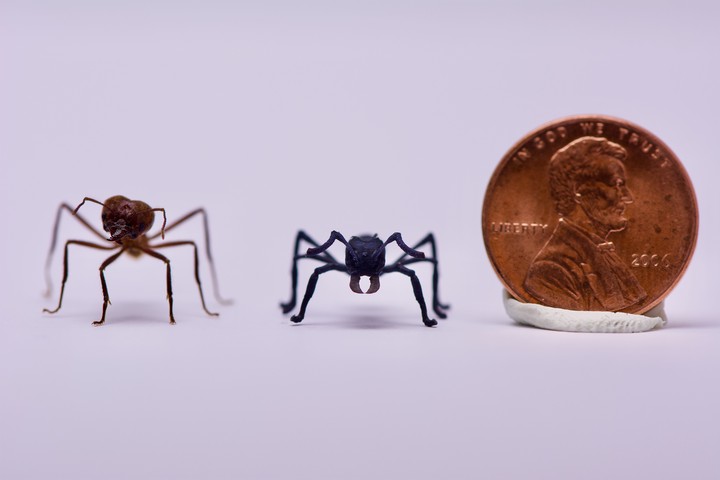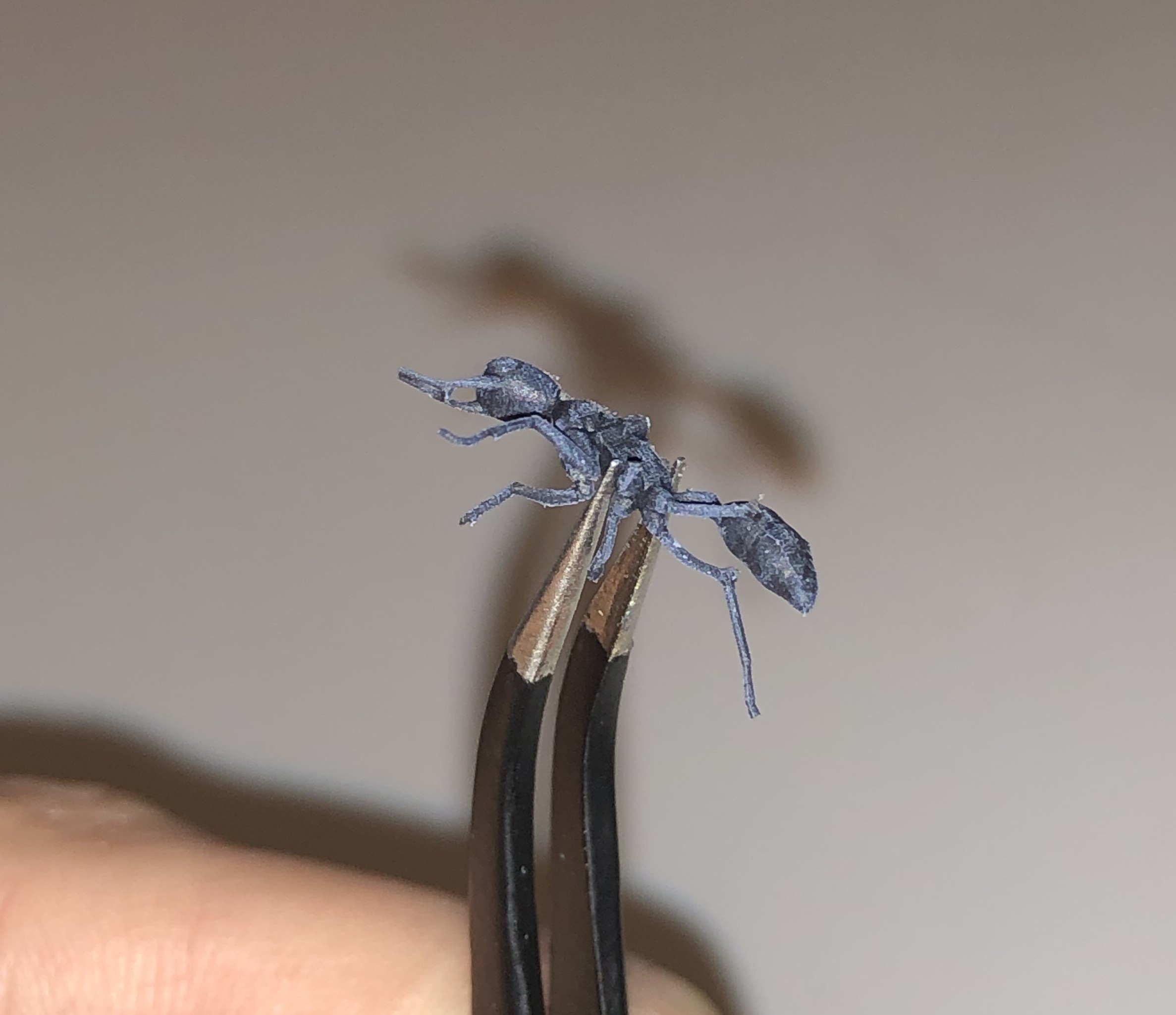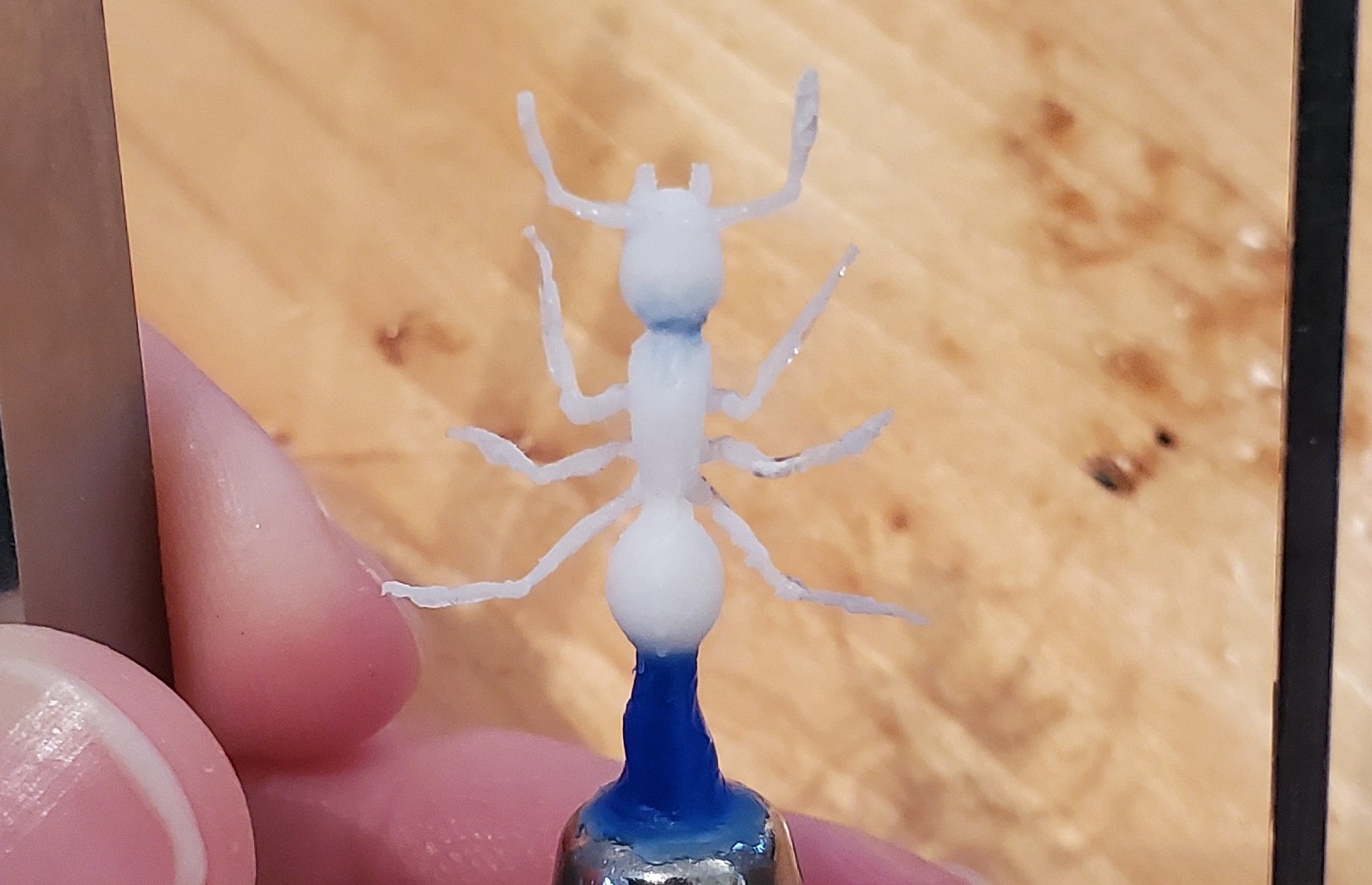Biomimetic 3D Printed Ants
 Photo courtesy of Balint Kacsoh (2020)
Photo courtesy of Balint Kacsoh (2020)Background
Beginning in 2019, I was asked to assist a research team at the University of Pennsylvania investigating the behavioral patterns of ants in isolation and any relation to epigenetic factors within the ants.
One segment of their research revolves around how socialization acts as a factor for lifespan. It has already been shown that ants in isolation have significantly shorter lifespans than those in full colonies. A lead author for the study, Balint Kacsoh, was interested in further exploring this phenomenon by testing different methods of ‘rescuing’ the isolated ants. One method that he devised for doing this was 3D printing ants to act as companions for the isolated ants.
At this stage Balint reached out for some assistance in preparing the model files of ants as well as ideas for removing the ants from their support material, a task which becomes difficult at such small scales.
I was able to help the team optimize the model files for better printability. Though these were big improvements, there were still issues getting the models printed at the appropriate scale. Nonetheless, these models were suitable for the initial study. To enhance the effect, Balint and other members of the lab coated the ant models with an ‘ant extract’ to aid in the integration of the fake and real ants.

Moving forward they wanted a more robust material than the plastic resin they had been printing with. I began to research various methods of getting the ants produced in metal. This would allow us to have the same model be used for repeated ant extract coatings rather than a new model being swapped in for each recoating (this reduces unwanted variability that the ants could pick up on, thus increasing the robustness of the study).
First, we made several attempts with 3D printing of the ants, yet, again the scale became an issue and we were unable to get this to work. I turned instead to casting the ants in metal. I made contact with a jewelry artist who was able to take the 3D model I provided and cast it in wax. The wax models are now being cast in silver and the initial results seem promising.

More updates will follow as this project progresses.